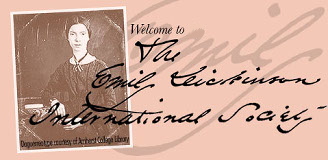
You are hereHart, Ellen Louise: "Reading and Teaching Dickinson’s Poetry in a Time of Climate Change"
Submitted by RFranz on July 18, 2013 - 4:49pm
Reading and Teaching Dickinson’s Poetry in a Time of Climate ChangeEllen Louise Hart, Portland State University, UC Santa Cruz emerita This presentation seeks to create opportunities to reflect upon ways poetry and the humanities, in concert with the sciences, can contribute to changes in environmental thought and action. Drawing on the course I offered this spring, “Topics in Literature: The ‘Green World’ in American Poetry,” we’ll examine some stories about issues raised by exploring the genre of American “nature” poetry in all its diversity and complexity. To do this, the course took an historical approach, from its roots in the work of the earliest American poet, Anne Bradstreet (“Contemplations”), published in 1650, to Mary Oliver (American Primitive), probably the best selling living poet in America today, and Natasha Trethewey (Beyond Katrina: A Meditation on the Mississippi Gulf Coast), current United States Poet Laureate. In between we’ll read essays by Ralph Waldo Emerson, on “Nature” and “The Poet,” and look at work by Emily Dickinson, an engaged reader of her contemporary Emerson. Relevant to such critical inquiries are the works of a former Oregon Poet Laureate, William Stafford (Even In Quiet Places), as well as early Beat poet and environmentalist with Oregon connections, Gary Snyder (Turtle Island). Throughout we’ll wrestle with issues of art and polemic and examine the possibilities for literature’s contributions to consciousness and conscience. The work of these poets asks us to examine their concern with the “green world” in relation to spirituality and religion, race, region, and sustainability. As it was for the spring course, the backdrop for this presentation is the crisis of climate change and why it should be any consideration at all when reading Emily Dickinson.
|